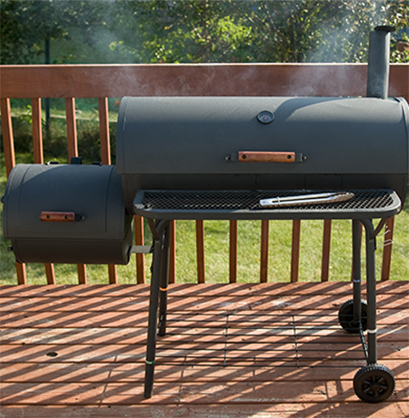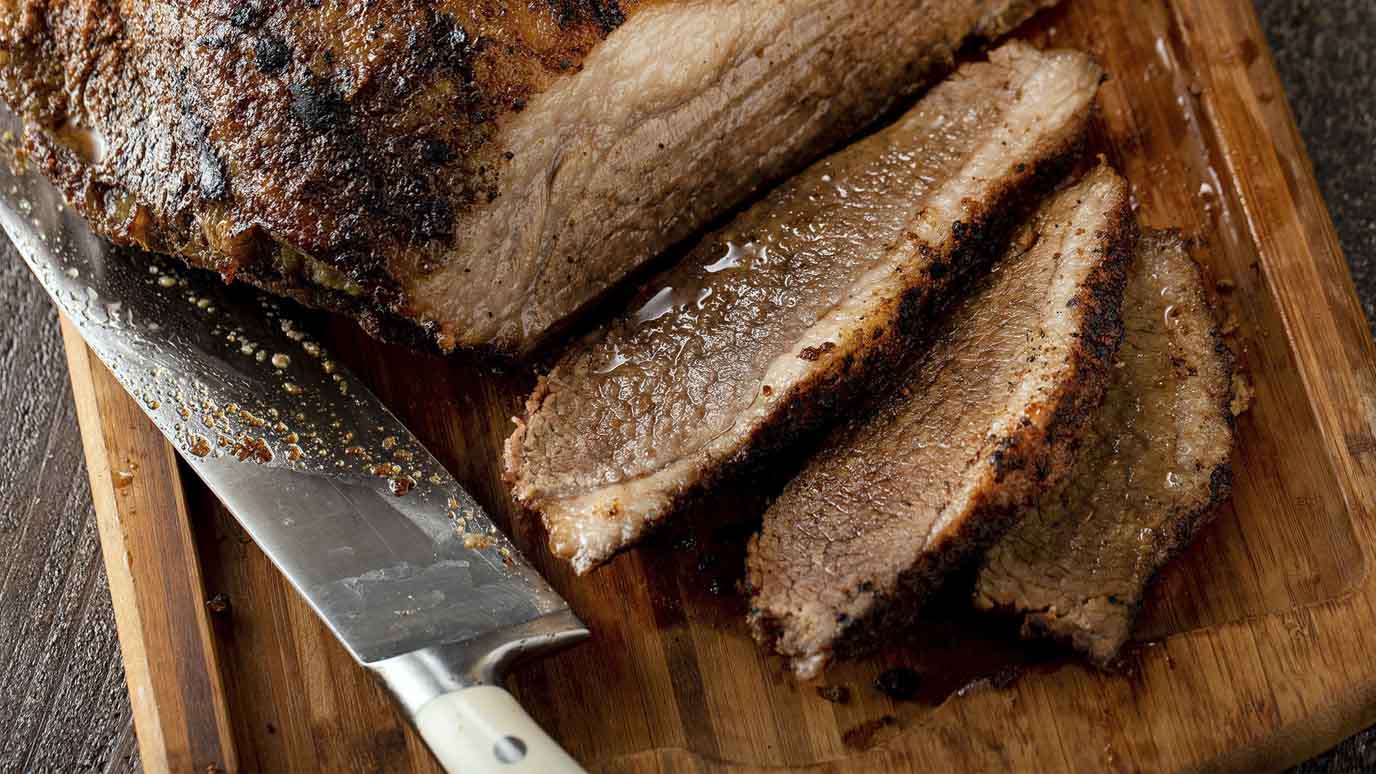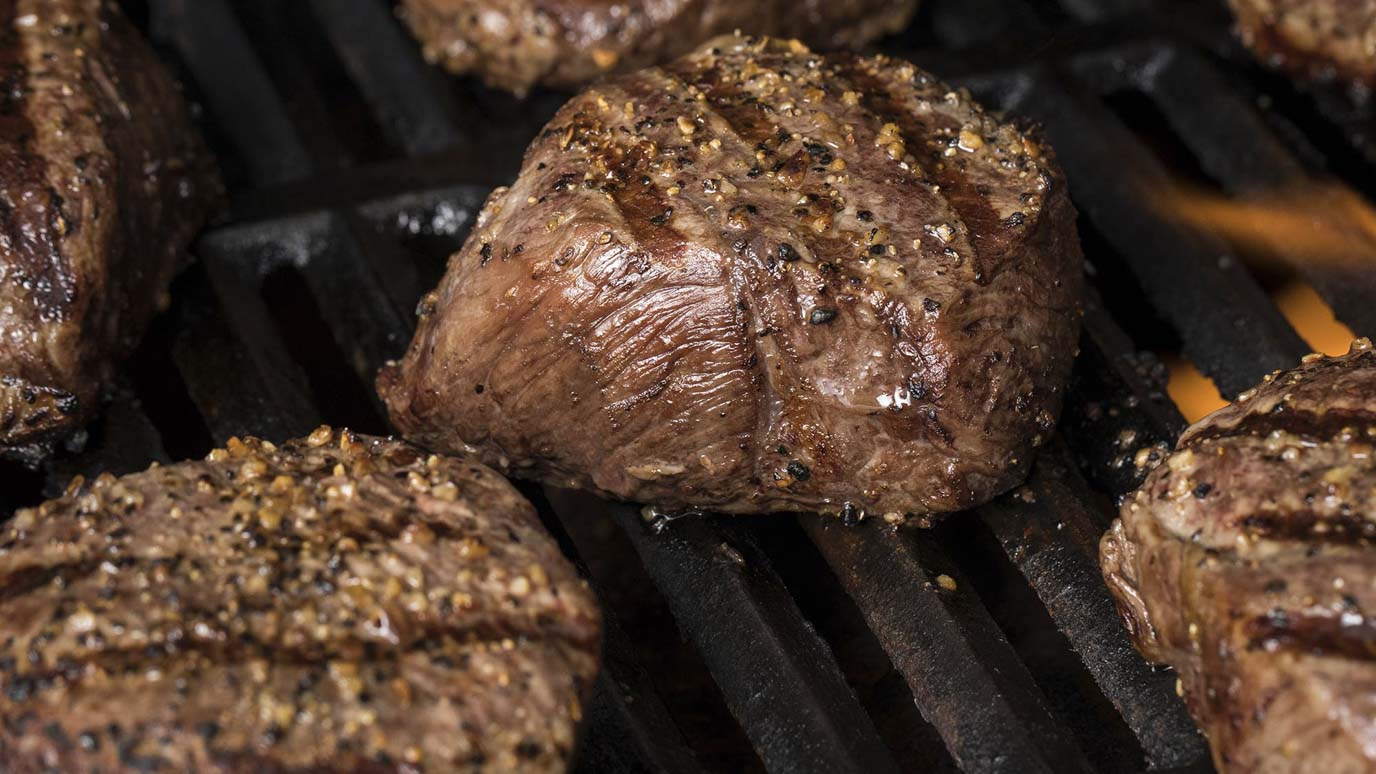How to Manage Heat on Your Grill
Setting up the grill right means better grilling and better-tasting food. No ingredients sticking to the grates or uneven cooking. Ever. Here’s what you need to know for charcoal, gas, open-flame and smoker grills.
Gas Grills
Create two heat zones on a gas grill by adjusting the burners. Use direct heat, where the ingredient is directly over lit burners, to sear the surface of foods or create a crispy outside. Indirect heat, or the unlit side of the grill, works for cooking foods through at lower temps. If you’re cooking skin-on chicken or thicker steaks, start on indirect heat then move to direct to prevent sticking and help foods cook evenly.

1. Single-Level: A thin and even layer of coals, perfect for grilling quicker cooking foods like burgers and hotdogs. 2. Double Banked: No fire in center of the grill allows for indirect cooking of larger cuts such as whole chickens or top round roasts without the flare-ups. 3. Half-Grill: Creates a zone of ultra-concentrated heat with coals on one side only. Ideal for searing. 4. Two-Level: Allows for two areas, one to sear and the other to cook food through.
Testing the Heat
To gauge if the grill is ready, you can use your hand as an impromptu thermometer. Carefully hover over the grill to find out what the rough temperature is. Too hot after a second? Start searing that steak. See more time-to-temperature ratios in the diagram.

Heat Zones
Create two heat zones on a gas grill by adjusting the burners. Use direct heat (all burners on) to sear the surface of foods or create a crispy outside. Indirect heat (center burner off) works for cooking foods through and cooking at lower temps. If you’re cooking skin-on protein, such as chicken, start it on indirect head then move to direct to prevent sticking and help it cook evenly. More epic grilling tips

Seasoning the Grill
While it may sound like you’re spicing the grill, this technique is really a matter of cleaning and prepping the grates with oil. Watch how it’s done in the video.

Smoker
A smoker is brisket’s ultimate companion. Smother larger cuts of protein in a rub or seasoning, and you can let them smoke for hours. For the advanced griller, multitasking in the smoker is always a go. Try smoking brisket, sausages, whole garlic, and even using meat hooks for a couple racks of ribs in a vertical smoker. When adjusting the vents or water tray, use tongs and heavy-duty gloves.
Wood Plank Grilling
Grill anything from salmon to mushrooms on a well-seasoned plank to absorb the natural, subtle flavors of the plank. A key step, soaking the plank gets rid of any residual bitter flavor in wood. Here’s how to do it.

Open-Flame
It’s the oldest known grilling style, dating back to ancient hearths. The trick to a roaring fire? Air and very dry wood. You’ll need a fire pit grate and split dry wood to begin (smaller pieces of wood light easier and help the fire breathe). In the diagram, you can see how to arrange a fire in a “hashtag” formation, which allows for air pockets and epic flavorful outdoor grilling.











